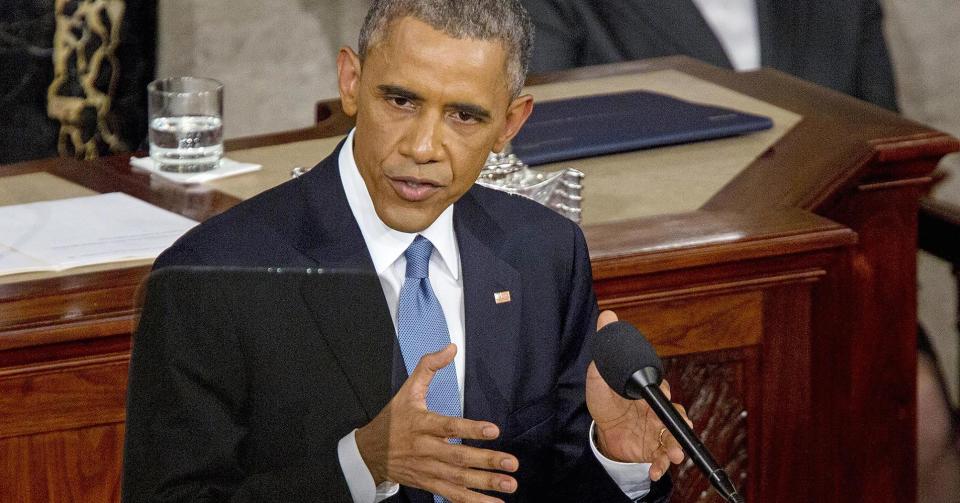Slow rollout for Obama's myRA retirement plan

The Treasury Department is rolling out its new myRA retirement account proposal very cautiously and with little fanfare.
Introduced by President Obama in his State of the Union address last year, myRA-short for "my Retirement Account"-is intended to get the approximately 50 million Americans who don't have access to a 401(k) retirement plan through their employer into a savings habit. The government picked Dallas-based Comerica to serve as custodian for the program.
However, apart from the U.S. Office of Personnel Management-which handles human resources for the federal government-the department has yet to name any employers, including private-sector companies, participating in the pilot program it started in December. Employers have to set up direct-deposit capabilities for employees to open an account.
"They're dealing with people's money, so they want to make sure they get all the bugs out to handle the expected volume coming," said David John, a senior policy analyst at AARP. "I expect there will be substantial use of the program once it's fully rolled out."
Read More Obama must loosen savings strictures
The biggest advantage of the myRA proposal is its simplicity.
People can open the accounts with just $25 and can contribute as little as $5 per paycheck through direct deposit. After-tax dollars are contributed to the account, which is set up as a Roth IRA, and the principal and interest earned can be withdrawn at any time without tax or penalty.
Participants can accumulate a maximum of $15,000 in the account, at which point it would be rolled over into a private-sector Roth IRA. If they haven't reached that threshold after 30 years, the account would also be rolled into a private account.
"The Department of the Treasury developed myRA to address some of the common barriers to retirement saving and to provide an option that is simple, safe and affordable," explained Daniel Watson, a Treasury spokesman, in an email.
"MyRA is a starter retirement savings account, with no minimums, fees or risky investments, and savers can choose to transfer or roll over their account balance into a private-sector Roth IRA at any time," Watson said.
Calling the myRA a retirement account may be a bit of a stretch, given the $15,000 cap on contributions, according to some financial experts. If it helps lower-income Americans develop a savings habit, however, it may be useful.
"This is not a solution to the national savings problem, but it's a tool towards addressing it," said John at AARP. "It's a simple accumulator account for new savers, with no administrative costs and no risk of loss."
Read More Roth IRA advantage in danger
With the myRA funds invested in government bonds and earning a guaranteed return equal to that of the "G" fund in the government's Thrift Savings Plan, there may be no risk of loss, but there's also little opportunity for return.
"The biggest criticism of the myRA accounts is that there is only one investment option," said Jeffrey Levine, an IRA technical consultant with Ed Slott and Co. "Shouldn't young savers be invested in growth assets?"
Indeed they should, many would argue. However, the government has put the emphasis on security and simplicity to attract individuals who often don't trust financial intermediaries with their money.
As advisors and analysts point out, people have to save before they can invest, and studies show that low-income individuals are apt to abandon the effort early if they experience a significant loss on their savings.
Read More Policy fixes to save retirement day?
The myRA idea is that people can begin to accumulate assets, and when they reach the $15,000 threshold, they'll have a broad range of investment options in a traditional Roth IRA structure. While the G fund return is currently minimal, given low interest rates, it's better than a savings account.
"It's hard to argue you can find a better guaranteed fixed-income portfolio with the security and return of the G fund," said Tim Maurer, a certified financial planner and director of personal finance for Buckingham and the BAM Alliance. "The people that will find this attractive may want more safety than return."
Maurer is all for any vehicle that helps people save more, but he thinks the program should be more ambitious. "You can't really call this a retirement account, given it has a real return of close to 0 [percent] and it caps out at $15,000," Maurer said. "That would provide a couple of months of income in retirement."
Maurer said he thinks the money spent on the myRA program might have been better used to enable people to invest in a full government-backed IRA program in which they could choose from the range of investment portfolio options run through the Thrift Savings Plan.
In the short run, the success of the myRA program will depend on employers buying into the idea. While there may be options down the road to allow people to participate directly, the myRA program currently depends on companies setting up direct-deposit systems for participants. So far, it's not clear if many employers are getting on board.
"I haven't heard of a single private-sector employer setting up myRA accounts yet," Levine said. "I hope I'm wrong, but I can't see this taking off."
To render the myRA program more attractive, Levine suggests that the government should provide some form of tax credit to motivate companies to participate.
-By Andrew Osterland, special to CNBC.com
More From CNBC

 Yahoo Finance
Yahoo Finance 
